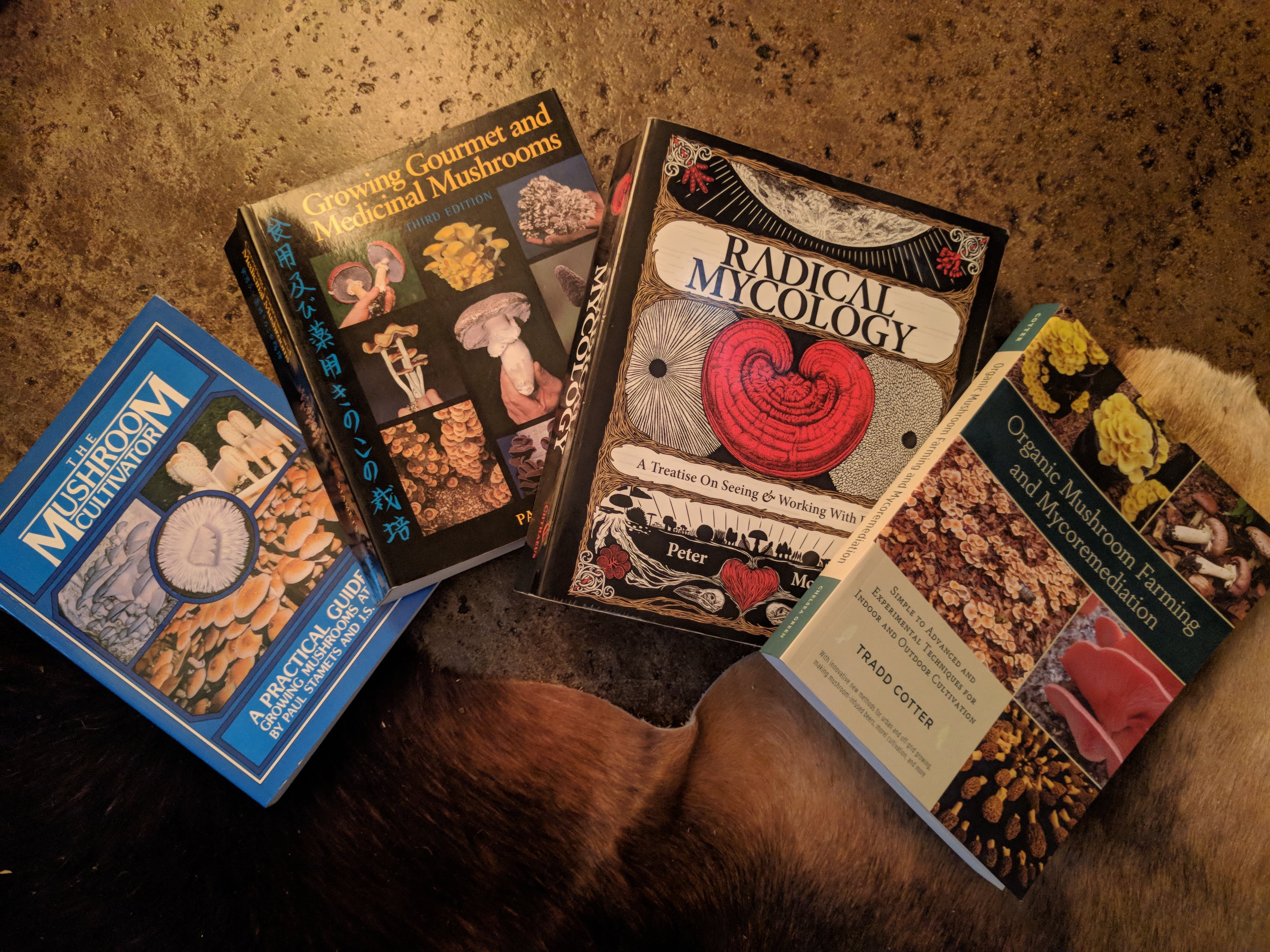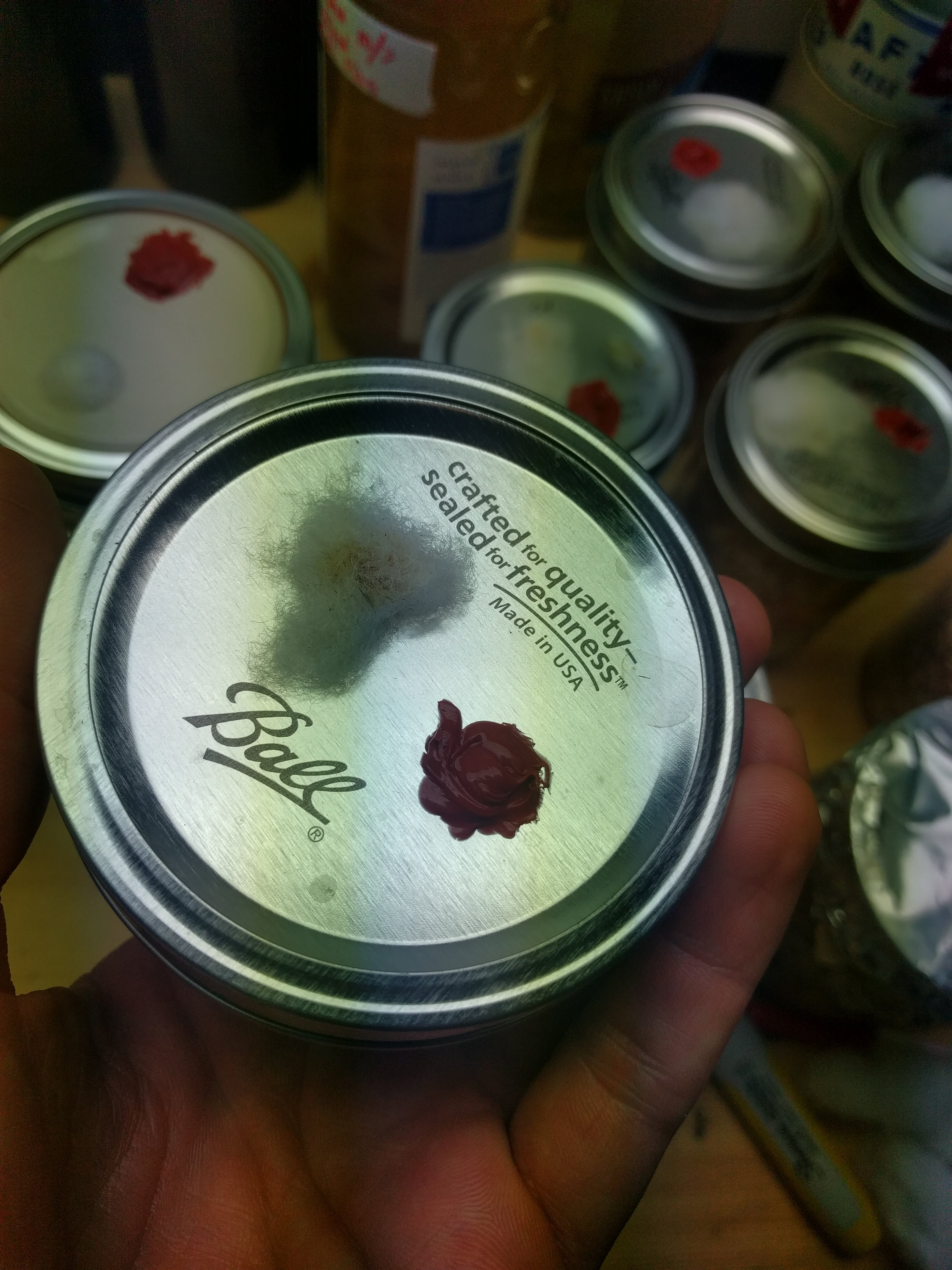As I mention in the page on Mycology, I have wanted to grow mushrooms for a long while now, mostly because they are a great combination of creepy, delicious, and miraculous! Information on home-scale mushroom cultivation is abundant, all over the internet and in several great books that are very accessible to anyone new to the field.

The first step for me was outlining the different stages of the fungal life cycle as it applies to growing them at home. They go a little something like this:
Spores -> Mycelium -> Mushrooms
Spores are grown out on a substance called agar into mycelium in a sterile environment, typically a petri dish, without anything to compete with what you are cultivating. (think lab goggles and white coats)
Mycelium are grown out into big enough masses on the right kind of substrate (like sterilized grain or wood chips, or both) until they run out of food and decide to make fruit, aka mushrooms!
Mushrooms remain medicinal, creepy and delicious, and, once harvested, can be stored or prepared for edible or medicinal uses in a gazillion ways. Once mature, mushrooms make spores and start the whole process over.
That is the incredibly simplified version. Here’s another one:

In practice, I decided that I would try as much of the cultivation as possible without investing in the equipment necessary to create a sterile environment for petri dish mycelium growth.
What I neglected to say above is that mycelium of many species can amazingly be grown, multiplied and cultured almost indefinitely, all while letting some of those batches mature to bear fruit. Imagine a cutting from an apple tree that you could let grow for a while, then take even more cuttings from to start new trees, all while the first tree would mature until it filled the pot you had it in and then make apples. That is a lot like how mycelium cultivation works in principle.
They can also be grown in liquid nutrient mixes, called liquiculture, that have been sterilized in a pressure cooker or autoclave and then inoculated with other mycelium from a sterile source, like petri dish mycelium, spores, or a clean tissue sample from a mushroom stalk.

Once you have some healthy liquiculture stashed away in a closet or your secret mad science lab, you can lightly cook, then sterilize jars full of wheat or rice (with special sciency lids, of course) and seed them with a few drops to grow what is called “grain spawn.”



When your mycelium completely take over your grain, you have full-fledged “grain spawn” that is ready to be used to inoculate other, more nutritious materials (substrates) that your mycelium can grow into and use to grow mushrooms. Different species prefer different fruiting substrates. Some can fruit on hardwood chips, while others fruit on diverse substrates from coffee grounds to shredded wheat straw. The substrates can be prepared in a bunch of different ways, depending on your goals, your equipment and, most importantly, the type of fungi you are cultivating.
That’s all for now!
Good luck!
Resources:
Radical Mycology
by Peter McCoy
Organic Mushroom Farming and Mycoremediation
by Tradd Cotter
Growing Organic and Medicinal Mushrooms
by Paul Stamets
The Mushroom Cultivator
by Paul Stamets and J.S. Chilton